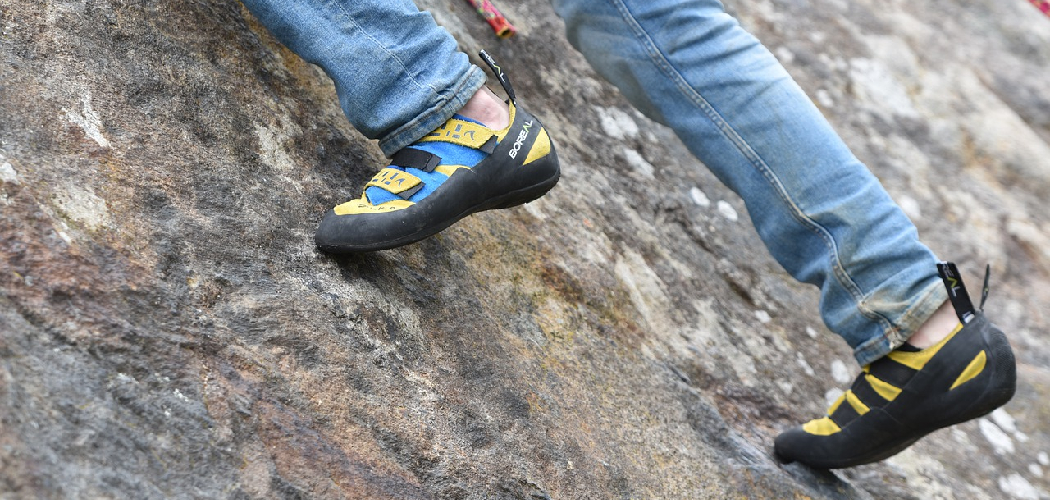If you’re a climber, you know that your shoes are an important tool in your arsenal. But, when do you know it’s time to replace them? Climbing shoes are typically designed to last for around six months of hardcore climbing. However, depending on how often you climb, they may last longer or need to be replaced sooner. So, how can you tell when to replace climbing shoes?
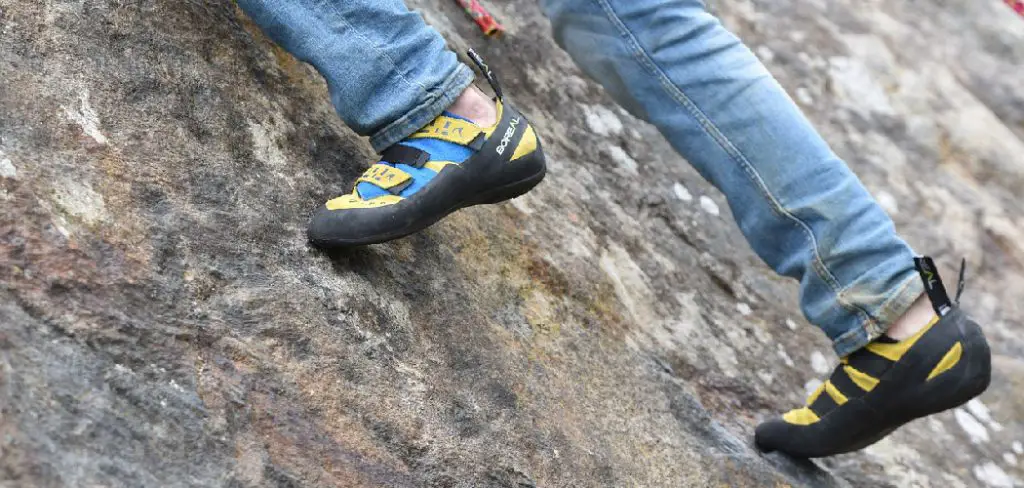
In this post, we’ll give you some tips on when to replace your climbing shoes. Keep in mind that everyone’s feet are different. So use these tips as a starting point, and then pay attention to how your shoes feel on your feet. If they start to feel worn down or uncomfortable, it might be time to replace them! Read on to know more!
Summary: When it comes to rock climbing, having a quality pair of shoes is essential for safety and performance. Knowing when to replace climbing shoes can be difficult, as there are a few different factors to consider when deciding whether or not it’s time for new ones. Generally, you should replace your climbing shoes if they no longer provide adequate support, do not fit comfortably, or have developed too much wear and tear.
13 Common Signs to Know When to Replace Climbing Shoes
1. Climbing Rubber Is Worn or Damaged:
If the climbing rubber on your shoes is visibly worn or damaged, it’s time to replace them. The rubber provides the grip you need while climbing, and without it, your shoes will be much less effective.
2. You Can Feel Spikes in the Rubber:
One way to tell that your climbing shoes need replacement is if you can feel the spikes in the rubber. As shoes wear down, the rubber becomes thin and less effective at gripping the rock. So if you can feel the spikes poking through, it’s definitely time for a new pair of shoes.
3. The Shoes Are No Longer Comfortable:
If your shoes are no longer comfortable to wear, it’s probably because the padding or cushioning has worn down. Once the padding is gone, your feet will start to feel the rocks and other surfaces you’re climbing on, leading to pain and blisters.
4. You’re Experiencing More Blisters:
If you’re experiencing more blisters than usual, it could be because the shoes are no longer providing the support you need. Blisters can also signify that the shoes are too tight or that the climbing rubber is too thin.
5. You’re Experiencing Too Much Slippage:
If your shoes are no longer gripping the rock as well as they used to, it’s likely because the climbing rubber has worn down. When this happens, you’ll start to experience a lot of slippages, which can be very dangerous while climbing.
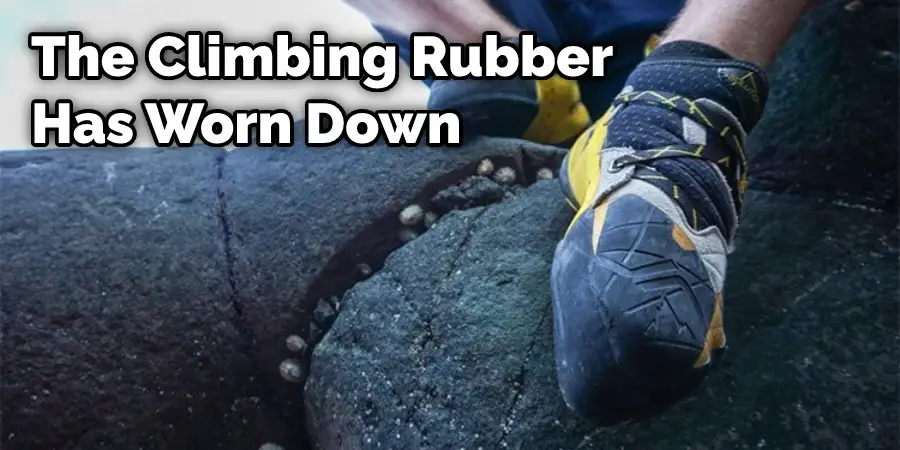
6. Delamination:
If you notice that the rubber on your shoes is starting to peel or flake off, it’s a clear sign that the shoes need to be replaced. When delamination occurs, the adhesive that holds the rubber to the shoe has failed, leading to further damage.
7. Toe Box Is Worn or Damaged:
Once the toe box area of your climbing shoes starts to wear down, they will become less effective at gripping the rock. If this happens, it’s time to replace them. Likewise, if the fabric or rubber on the toe box becomes damaged, you should also replace your shoes.
If your toe box is significantly worn or damaged, it’s time for a new pair of climbing shoes. A shoe with a well-worn toe box will be less effective at gripping the rock and can also lead to pain and blisters.
8. You’re Having Trouble Gripping the Rock:
If you find that you’re having trouble gripping the rock, it could be because your shoes have lost their stickiness. As rubber wears down, it becomes less effective at gripping the surface, leading to a loss of control when climbing.
9. The Shoes Are Too Old:
Climbing shoes are typically designed to last for about six months of regular use. If you’re using your shoes more frequently than that or climbing in a particularly harsh environment, they may not last as long. If it’s been more than six months since you’ve replaced your shoes, it’s probably time to do so.
10. The Sole is Worn:
If you’re starting to see a lot of wear on the sole of your shoes, it’s probably time for a new pair. As the sole wears down, it becomes less effective at providing traction and stability. This can be dangerous while climbing, as you may start to lose your balance.
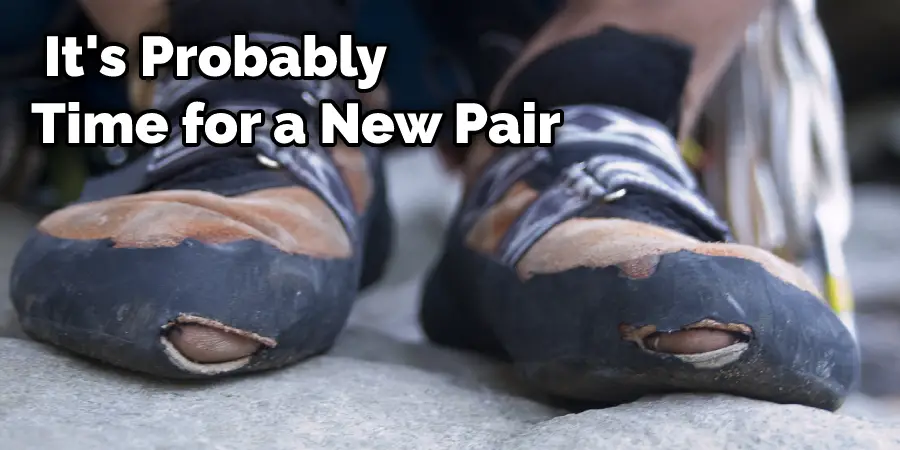
11. You’re Finding It Harder to Stand in Your Shoes:
If you’re finding it harder and harder to stand in your shoes, it’s a clear sign that they’re no longer the right size for you. When shoes are too tight, it can be difficult to stand in them for an extended period of time. If this is the case, it’s time to go up a size.
12. The Shoes Are Rusty:
If your shoes are starting to rust, it’s a clear sign that they’re no longer usable. Rust is a sign of metal corrosion, and once it starts to form, it will only worsen over time. So if you notice any rust on your shoes, it’s time to replace them.
13. Rand is Worn, Damaged, or Blown:
If the rand on your shoes is worn, damaged, or blown, it’s time for a new pair. The rand is the piece of rubber that runs along the edge of the shoe, and it’s responsible for providing grip and stability. When it’s damaged or worn, it can be very dangerous to climb with.
You Can Check It Out to Break in Climbing Shoes
Few Characteristics of Climbing Shoes
Now that you know when to replace climbing shoes, we have some climbing shoes characteristics that will help you identify the problem.
1. Laces versus Velcro:
Climbing shoes typically come in either lace-up or Velcro styles. Lace-ups offer a more customized, snug fit, while Velcro shoes are easier to put on and take off.
2. Toe Shape:
Climbing shoes come in various toe shapes, depending on the climbing you plan to do. For example, a downturned toe shape is designed for rock climbing, while a flatter shape is better for bouldering or general climbing.
3. Heel Height:
Climbing shoes also come in low- and high-heeled varieties. A higher heel gives you more power when pulling on holds, while a lower heel is more versatile and easier to wear for long periods.
4. Upper Material:
Climbing shoes are typically made from leather, suede, or synthetic materials. Leather and suede are durable and good grip, while synthetic materials are lightweight and less expensive.
5. Style:
Climbing shoes come in various colors and styles. You can choose whatever you like, but it’s important to select a color and style that will work well with the type of climbing you plan to do.
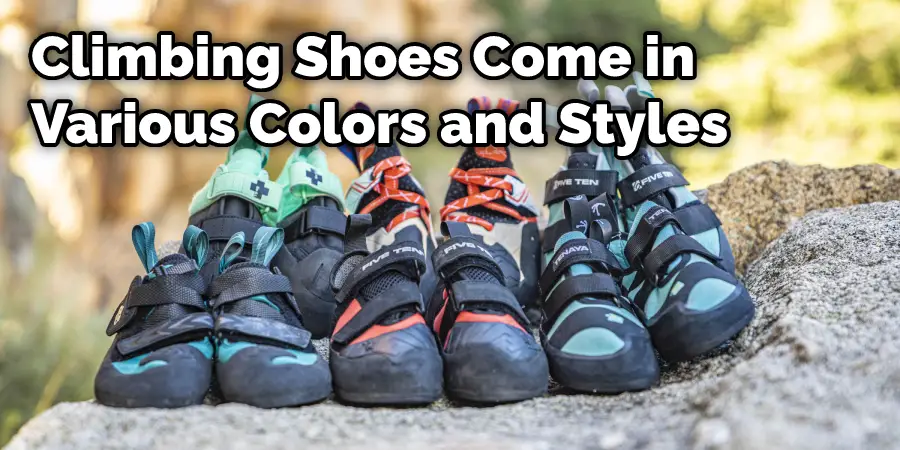
How Long Do Climbing Shoes Last?
Climbing shoes are an important piece of gear for any climber. They provide the necessary grip and friction to allow you to ascend rocks and boulders. How long your climbing shoes last depends on various factors, including how often you climb, the type of climbing you do, and the quality of your shoes.
Most climbers will need to replace their climbing shoes every six to twelve months. However, this can vary depending on your individual needs. For example, if your shoes are starting to feel less sticky, or if the rubber is becoming brittle and cracking, it’s time for a new pair of shoes. You may also consider replacing your shoes if you start experiencing pain or discomfort while climbing.
How to Choose a Climbing Shoe?
When it comes time to choose a new pair of climbing shoes, there are a few things you need to take into consideration. Here we have listed a few key factors to keep in mind:
1. Type of climbing:
Different types of climbing (e.g., bouldering, sport climbing, trad climbing) require different shoes. So be sure to choose a pair of shoes suited for the type of climbing you do most of the time.
2. Your climbing ability:
If you are starting out, it is best to buy a more comfortable and versatile pair of shoes. As you progress in your climbing, you can invest in a pair of shoes specifically designed for more difficult routes.
3. Sport:
If you are primarily a sports climber, you will want to look for shoes with a snug fit and are sticky, so they will help you grip the rock. Generally, sport climbers should replace their shoes every 6-8 months. The soles will wear down and eventually become too smooth to provide good traction.
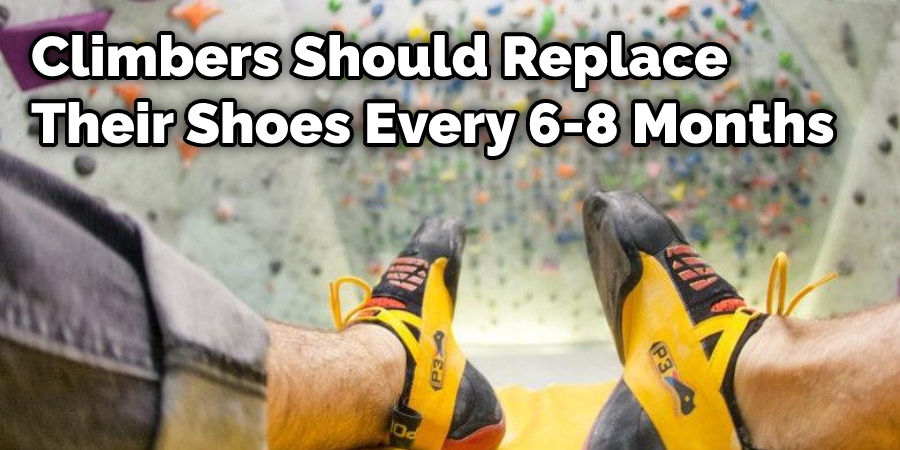
4. Bouldering:
For bouldering, you want light shoes and have a good amount of friction. This is because when bouldering, you often have to move quickly and make a lot of sudden changes in direction. Also, it would help if you replaced your bouldering shoes when the tread on the bottom starts to wear down.
5. Climbing style:
Consider your climbing style when selecting new shoes. If you climb many slabby routes, you will want shoes with a low profile and a good edge grip. If you climb mostly overhanging routes, you will need shoes with a high profile and good toe grip.
6. Weather conditions:
The weather can also play a role in your shoe choice. For example, if it is cold and wet outside, you will want to go with a pair of shoes that have a higher insulation rating. On the other hand, if you are climbing in hot weather, you will want to go with a pair of shoes that have better breathability.
7. Fit:
When trying on new shoes, always make sure they are comfortable and good fit. You don’t want shoes that are too tight or too loose, as this can lead to discomfort and even injuries. Shoes should be snug but not tight, and you should be able to wiggle your toes freely. If shoes are too tight, they can cause pain and blisters, while too loose shoes can lead to slips and falls.
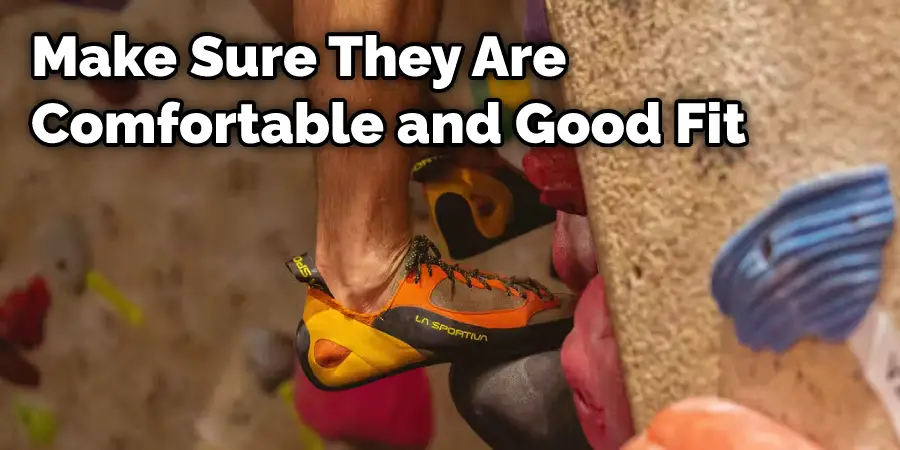
It’s important to note that the fit of climbing shoes will change over time. As they break-in, they will become more comfortable and fit better. So, it’s not necessary to replace your shoes as soon as they start to feel uncomfortable. Instead, wait until the shoes have completely broken in before deciding if they still fit well.
8. Material:
Climbing shoes are made from various materials, each with its own benefits and drawbacks. So be sure to choose a material that will work best for your needs. For example, if you’re a beginner, synthetic materials might be the best option because they’re less expensive and don’t need to be broken in. However, if you’re an experienced climber, leather might be a better choice because it’s more durable and gives you more control over your movements.
Some Helpful Tips and Suggestions:
Here we have given some key factors on when to replace climbing shoes.
1. Climbing shoes should fit snugly, as you don’t want them to slip off when you’re climbing.
2. Make sure the shoes are comfortable and allow for good ankle movement.
3. Test out a few different pairs of shoes until you find the perfect pair for you.
4. Climbing shoes should be replaced every six to twelve months, depending on how often you climb and how well you take care of your shoes.
5. If your shoes start to smell bad, that’s a sign that they need to be replaced.
6. If the soles start to wear down, it’s time to replace your shoes.
7. If you’re not sure whether or not your shoes need to be replaced, take them to a professional and have them inspected.
Frequently Asked Questions:
How Can I Tell if My Climbing Shoes Are Worn Out?
There are a few telltale signs that your climbing shoes need replacement. If the shoes start to smell bad, that’s usually a sign that they need to be replaced. Additionally, if the rubber on the soles is beginning to wear thin, or if the shoes are starting to feel too soft, it’s probably time for a new pair.
If you’re not sure whether your shoes need to be replaced, it’s always a good idea to consult with a climbing expert. They can help you determine whether your shoes are still safe to use and how long they will likely last.
Can You Resole Your Climbing Shoes?
In some cases, it is possible to resole your climbing shoes. This involves having new rubber glued to the soles of the shoes. However, this is not always a feasible option, and it can be quite expensive.
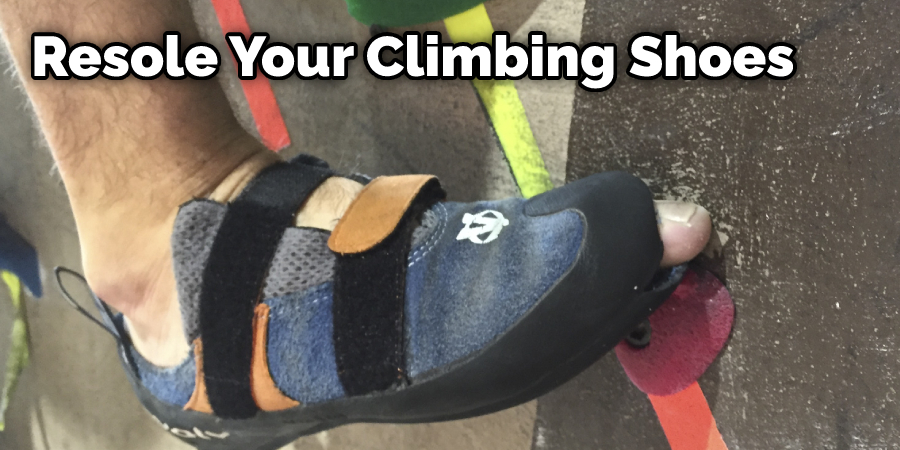
If you’re thinking about resoling your shoes, consult with a climbing expert first to see if it’s the right choice for you. They can help you determine whether your shoes are still safe to use and how long they will likely last. If you’re not sure when to replace climbing shoes then be sure read this full blog post.
Should I Wear the Same Pair of Shoes for All My Routes?
It’s generally a good idea to have a few different pairs of shoes for different types of climbing. For example, you might want a pair of shoes specifically for indoor climbing and another pair for outdoor climbing. This is because the type of climbing you do will affect the type of shoes you need.
Climbing shoes are an important piece of gear, and it’s important to take care of them so that they last as long as possible. By following these tips, you can help ensure that your shoes will stay in good condition for many climbs.
Why do You Need to Replace Climbing Shoes?
Climbing shoes are an important piece of gear for climbers. They provide support and grip to the climber’s foot while they’re ascending a rock wall. Unfortunately, the shoes will wear down and lose their ability to provide good support and grip over time. This is why it’s important to replace your climbing shoes periodically.
A few telltale signs indicate that your climbing shoes need to be replaced. If the shoes start to smell bad, that’s usually a sign that they need to be replaced. Additionally, if the rubber on the soles is starting to wear thin, or if the shoes are starting to feel too soft, then it’s probably time for a new pair.
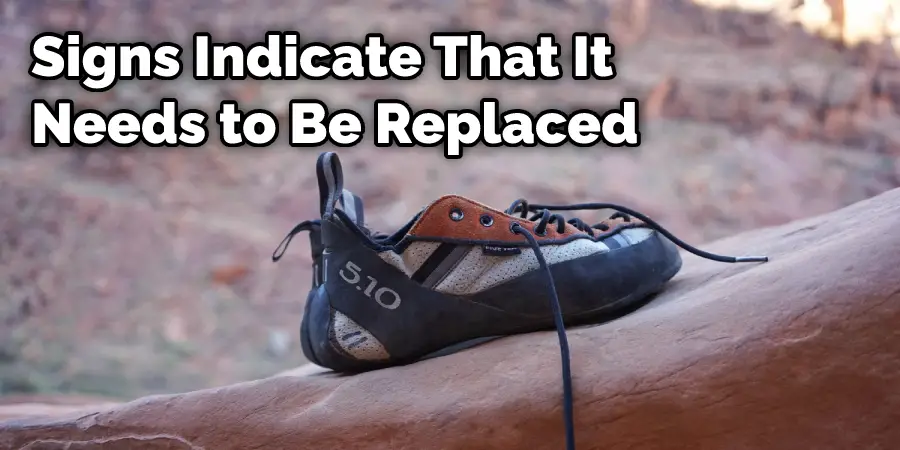
If you’re not sure whether your shoes need to be replaced, it’s always a good idea to consult with a climbing expert. They can help you determine whether your shoes are still safe to use and how long they will likely last.
How Often Should You Replace Your Climbing Shoes?
Climbing shoes should be replaced every six to twelve months, depending on how often you climb and how well you take care of your shoes. If your shoes start to smell bad, that’s a sign that they need to be replaced. If the soles start to wear down, it’s time to replace your shoes. If you’re not sure whether your shoes need to be replaced, take them to a professional and have them inspected.
It’s important to take care of your climbing shoes to last as long as possible. For example, you should never put your climbing shoes in the washing machine or dry them in the oven. Instead, it would help if you cleaned them with a damp cloth and then let them air dry. You should also avoid wearing your climbing shoes on asphalt or other hard surfaces, which can damage the soles.
You Can check it Out to How Long Does It Take for Metatarsalgia to Go Away
Conclusion
When to replace your climbing shoes is a question that all climbers face at some point. Unfortunately, there are many different opinions on when shoes should be replaced, and no definitive answer. However, several factors influence when it is time to retire those beat-up old climbing shoes and buy a new pair.
In this post, we have discussed the few main indicators of shoe wear: fit, shape, rubber quality, and performance. By considering each of these factors, you can decide when it’s time for a new pair of climbing shoes. We hope this blog post has guided you on when to replace climbing shoes. If you have any questions or want to know more, then feel free to comment below!

